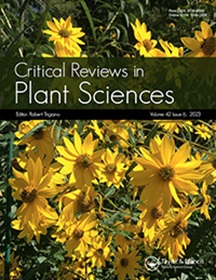Nested Association Mapping (NAM) Populations: Present Status and Future Prospects in the Genomics Era
IF 6
2区 生物学
Q1 PLANT SCIENCES
引用次数: 4
Abstract
Abstract Development of mapping population is a prerequisite for genetic dissection of genomic regions underlying complex traits. Nested Association Mapping (NAM) is an integrated multi-parent population approach that combines the advantages of linkage mapping and association mapping for high resolution and high-power mapping of complex traits. The NAM population is constituent of independent RIL populations derived from crossing several diverse donor parents with a common founder parent. The first NAM population was developed in maize and later on in several crops like barley, sorghum, wheat, rice, soybean, etc. This review provides an overview of NAM population development, its features, advantages over the other mapping populations, availability of high density genotyping platforms, key considerations for their development, applications and future prospects. We propose that the recent high-throughput analytical tools including high-end genotyping will accelerate utilization of NAM population for prediction of genomic estimated breeding value and genomic assisted selection in crop improvement program.嵌套关联作图(NAM)群体:基因组学时代的现状和未来展望
摘要绘制群体图谱是对复杂性状基因组区域进行遗传解剖的先决条件。嵌套关联映射(NAM)是一种综合的多亲本群体方法,它结合了连锁映射和关联映射的优势,实现了复杂性状的高分辨率和高功率映射。NAM群体是独立RIL群体的组成部分,该群体由几个不同的捐赠者父母和一个共同的创始人父母杂交而来。第一个NAM群体是在玉米中开发的,后来在大麦、高粱、小麦、水稻、大豆等几种作物中开发的。这篇综述概述了NAM群体的发展、特点、与其他作图群体相比的优势、高密度基因分型平台的可用性、其开发、应用的关键考虑因素和未来前景。我们提出,最近的高通量分析工具,包括高端基因分型,将加速NAM群体在作物改良计划中用于预测基因组估计育种价值和基因组辅助选择的利用。
本文章由计算机程序翻译,如有差异,请以英文原文为准。
求助全文
约1分钟内获得全文
求助全文
来源期刊
CiteScore
12.90
自引率
1.40%
发文量
15
审稿时长
>12 weeks
期刊介绍:
Critical Reviews in Plant Sciences focuses on presenting in-depth and up-to-date reviews of timely and/or cutting-edge subjects in the broad discipline of plant science, ranging from molecular biology/biochemistry through the areas of cell biology, plant pathology and physiology, genetics, classical botany, and ecology, to practical agricultural applications. Articles in the journal provide an up-to-date literature base for researchers and students, pointing the way towards future research needs. The journal is also a significant source of credible, objective information to aid decision makers at all levels.

 求助内容:
求助内容: 应助结果提醒方式:
应助结果提醒方式:


